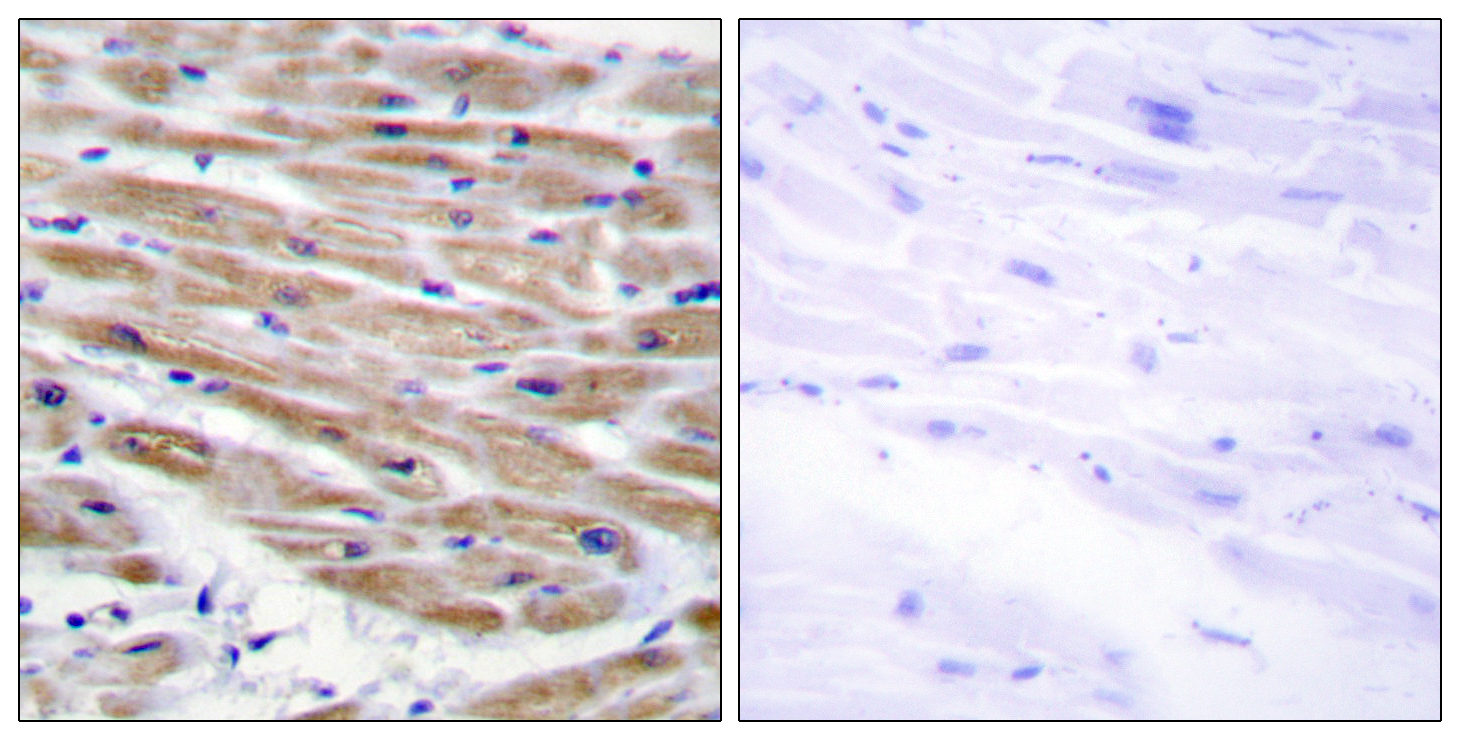MEK Kinase-4 Polyclonal Antibody
- Catalog No.:YT2709
- Applications:IHC;IF;ELISA
- Reactivity:Human;Mouse
- Target:
- MEK Kinase-4
- Fields:
- >>MAPK signaling pathway;>>GnRH signaling pathway
- Gene Name:
- MAP3K4
- Protein Name:
- Mitogen-activated protein kinase kinase kinase 4
- Human Gene Id:
- 4216
- Human Swiss Prot No:
- Q9Y6R4
- Mouse Gene Id:
- 26407
- Mouse Swiss Prot No:
- O08648
- Immunogen:
- The antiserum was produced against synthesized peptide derived from human MAP3K4. AA range:1281-1330
- Specificity:
- MEK Kinase-4 Polyclonal Antibody detects endogenous levels of MEK Kinase-4 protein.
- Formulation:
- Liquid in PBS containing 50% glycerol, 0.5% BSA and 0.02% sodium azide.
- Source:
- Polyclonal, Rabbit,IgG
- Dilution:
- IHC 1:100 - 1:300. ELISA: 1:5000.. IF 1:50-200
- Purification:
- The antibody was affinity-purified from rabbit antiserum by affinity-chromatography using epitope-specific immunogen.
- Concentration:
- 1 mg/ml
- Storage Stability:
- -15°C to -25°C/1 year(Do not lower than -25°C)
- Other Name:
- MAP3K4;KIAA0213;MAPKKK4;MEKK4;MTK1;Mitogen-activated protein kinase kinase kinase 4;MAP three kinase 1;MAPK/ERK kinase kinase 4;MEK kinase 4;MEKK 4
- Molecular Weight(Da):
- 182kD
- Background:
- The central core of each mitogen-activated protein kinase (MAPK) pathway is a conserved cascade of 3 protein kinases: an activated MAPK kinase kinase (MAPKKK) phosphorylates and activates a specific MAPK kinase (MAPKK), which then activates a specific MAPK. While the ERK MAPKs are activated by mitogenic stimulation, the CSBP2 and JNK MAPKs are activated by environmental stresses such as osmotic shock, UV irradiation, wound stress, and inflammatory factors. This gene encodes a MAPKKK, the MEKK4 protein, also called MTK1. This protein contains a protein kinase catalytic domain at the C terminus. The N-terminal nonkinase domain may contain a regulatory domain. Expression of MEKK4 in mammalian cells activated the CSBP2 and JNK MAPK pathways, but not the ERK pathway. In vitro kinase studies indicated that recombinant MEKK4 can specifically phosphorylate and activate PRKMK6
- Function:
- catalytic activity:ATP + a protein = ADP + a phosphoprotein.,cofactor:Magnesium.,enzyme regulation:N-terminal autoinhibitory domain interacts with the C-terminal kinase domain, inhibiting kinase activity, and preventing interaction with its substrate, MAP2K6. The GADD45 proteins activate the kinase by binding to the N-terminal domain. Activated by phosphorylation on Thr-1504.,function:Component of a protein kinase signal transduction cascade. Activates the CSBP2, P38 and JNK MAPK pathways, but not the ERK pathway. Specifically phosphorylates and activates MAP2K4 and MAP2K6.,similarity:Belongs to the protein kinase superfamily.,similarity:Belongs to the protein kinase superfamily. STE Ser/Thr protein kinase family. MAP kinase kinase kinase subfamily.,similarity:Contains 1 protein kinase domain.,subunit:Binds both upstream activators and downstream substrates in multimolecular complexes. I
- Subcellular Location:
- Cytoplasm, perinuclear region . Localized in perinuclear vesicular-like structures, probably Golgi-associated vesicles. .
- Expression:
- Expressed at high levels in heart, placenta, skeletal muscle and pancreas, and at lower levels in other tissues.
- June 19-2018
- WESTERN IMMUNOBLOTTING PROTOCOL
- June 19-2018
- IMMUNOHISTOCHEMISTRY-PARAFFIN PROTOCOL
- June 19-2018
- IMMUNOFLUORESCENCE PROTOCOL
- September 08-2020
- FLOW-CYTOMEYRT-PROTOCOL
- May 20-2022
- Cell-Based ELISA│解您多样本WB检测之困扰
- July 13-2018
- CELL-BASED-ELISA-PROTOCOL-FOR-ACETYL-PROTEIN
- July 13-2018
- CELL-BASED-ELISA-PROTOCOL-FOR-PHOSPHO-PROTEIN
- July 13-2018
- Antibody-FAQs
- Products Images

- Immunohistochemistry analysis of paraffin-embedded human heart tissue, using MAP3K4 Antibody. The picture on the right is blocked with the synthesized peptide.



